The city, founded by the Prince of Suzdal Yuri Dolgoruky in 1152, was named Kostroma either in accordance with the Finno-Ugrian «kostrum» — «fortress», or by the name of the straw doll Kostroma, which was burned every spring, glorifying the Sun God Yarila. In the middle of the XIV century Kostroma became a part of the Moscow principality and the most important northeastern outpost of the country. Moscow princes often fled behind the strong walls of the Ipatievsky and Nikolo-Babayevsky monasteries. The five hundred years old remains of the fortifications of the city Kremlin have survived to the present day. Today it is the territory of the Central Park.
In 1613 an event, significant for Russia, took place in Kostroma. In the walls of the Ipatievsky Monastery a new Russian tsar Mikhail Fyodorovich Romanov was elected, the founder of the dynasty that ruled the country for more than 300 years. The Polacks, who sought to capture the young tsar, took the local Kostroma peasant Ivan Susanin as a conductor. The latter, trying to save Mikhail Fyodorovich, and having an aim to destroy the Polacks’ detachment, took them into the dense forest and died himself. The monument to Susanin rises today in the center of Kostroma on the Susaninskaya Square.
By the middle of the XVII century Kostroma became a noisy fair city. The trading rows were built here one by one. First the wooden rows, and since the XVIII century the stone ones have been preserved in an unaltered form to our days. Admired by the beauty of these places, the Empress Catherine II granted the city a coat of arms with the image of a galley, and after another terrible fire, which almost completely destroyed the city, «gave» the inhabitants a new building plan. According to a legend, Catherine unfolded the fan, threw it on the map and ordered: «Build in this way.» Today this unusual fan-building is perfectly visible in the center of the city: eight wide streets radiate from the center — «frying pan», as the Kostroma people call Susaninskaya Square.
Since the XVIII century Kostroma has developed as a major river port. And in the 19th century a new Kostroma linen factory was built here, and the city became the flax capital of Russia. Nowadays the city is famous for its magnificent products made of flax, which can be bought in specialized shops and souvenir shops.
Another «attraction» of Kostroma is cheese. The first cheese factory opened here in the middle of the XIX century. Historians testify that for a long time merchants from Moscow brought thoroughbred cows to the Kostroma region and gave them to the peasants to graze them in the meadows, and then hand over the milk to the dairy plants built in the district. Cheeses from here went to the stores of Moscow and St. Petersburg. Now the «Cheese Exchange» is open in the vicinity of the Trade Rows in the center of Kostroma. Here one can taste and buy his favorite cheese, as well as honey from the beekeepers themselves. As for the local dishes, a soup with porcini mushrooms and a soup in merchant fashion in pots are the most typical in the city.
The modern Kostroma is located on two banks of the Volga River, which are connected by two bridges: the railway bridge and the automobile-pedestrian one. High-rise buildings are prohibited in the city center. Therefore, cozy streets, ancient stone mansions and wooden houses create here a unique atmosphere of patriarchal antiquity. From anywhere in the old Kostroma one can see the legendary Fire tower. Feodorovskaya Icon of the Mother of God, the patroness of the city, is kept in the Epiphany Monastery of St. Anastasia. The great walls of the Ipatievsky Monastery remember the great events of Russian history. The open-air Museum of Wooden Architecture, which has gathered houses, churches and other monuments of folk architecture dating back to the 16th century, helps us to transfer to the past of Kostroma.
Kostroma is an amazingly cinematic city. This sensation occurs during a walk along the embankment and intensifies when you admire the views of the Volga from the Ostrovsky’s Pavilion. But one comes to the city not only for the sake of history and idyllic Volga landscapes. For already twenty years the off-road lovers have been collecting spectacular auto-competitions «Susanin Trophy». And every year in August Kostroma residents and guests of the city are pleased with the International Festival Fireworks Competition «Silver Rook». Ancient and beautiful Kostroma is always glad to guests and is ready to show its best old streets, houses and monasteries to everyone who is not indifferent to the history.
Get directions
One can get to Kostroma by train from Moscow spending six hours. There are also bus routes from Moscow (travel time — 6-8 hours). It’s also nice to get to Kostroma via the Volga River — summer cruises with visiting the cities of the Golden Ring of Russia are very popular.





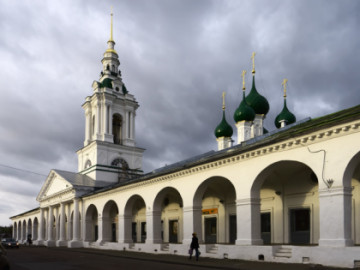

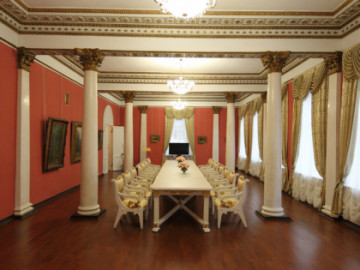
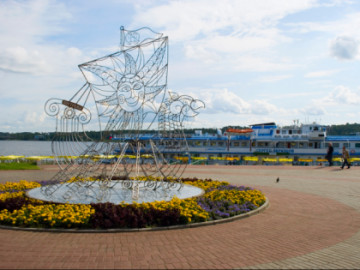
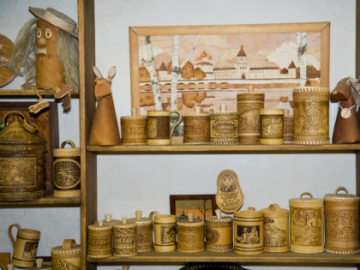
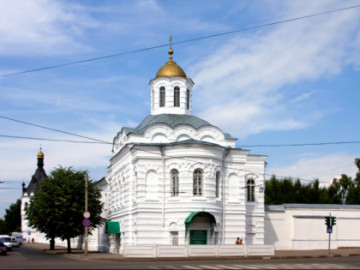
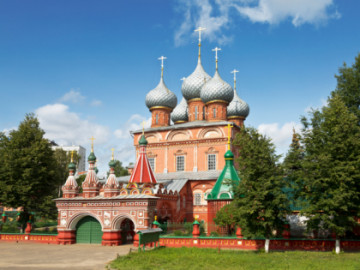





 Museums and Exhibitions
Museums and Exhibitions
 Other places
Other places
 Architectural Monuments
Architectural Monuments
 Temples and places of worship
Temples and places of worship